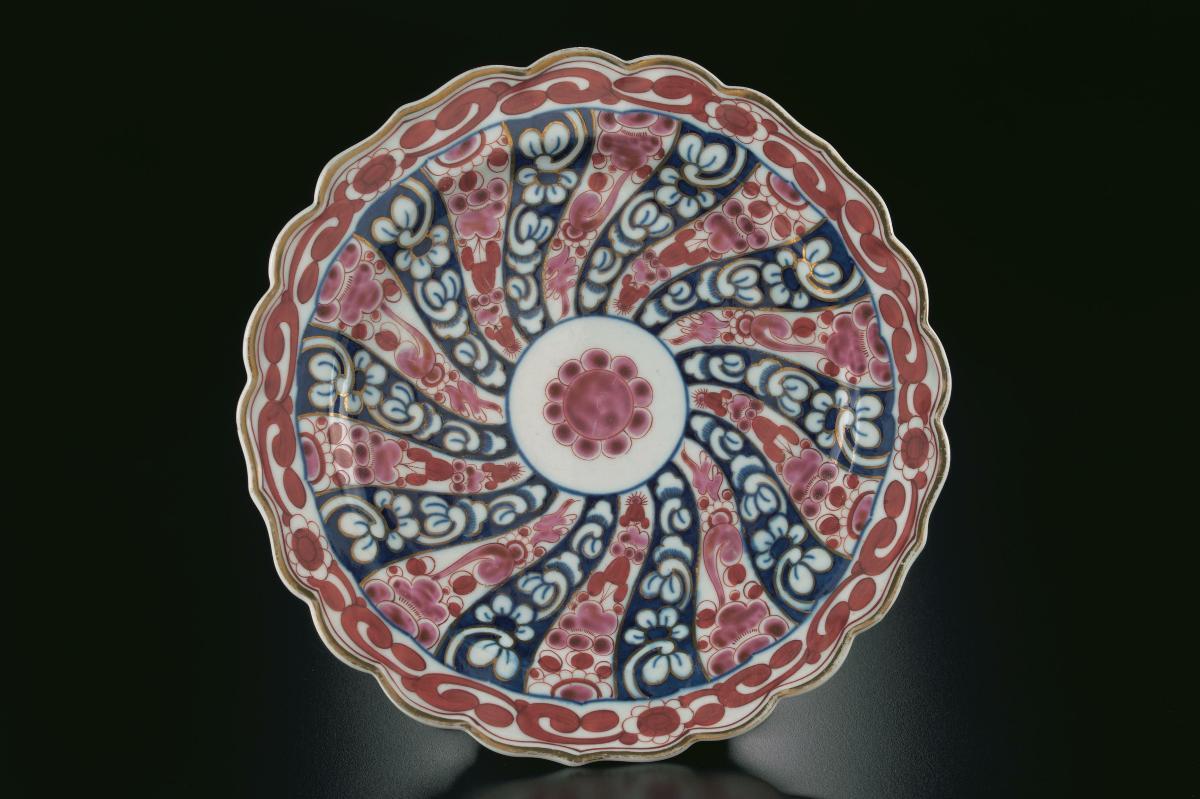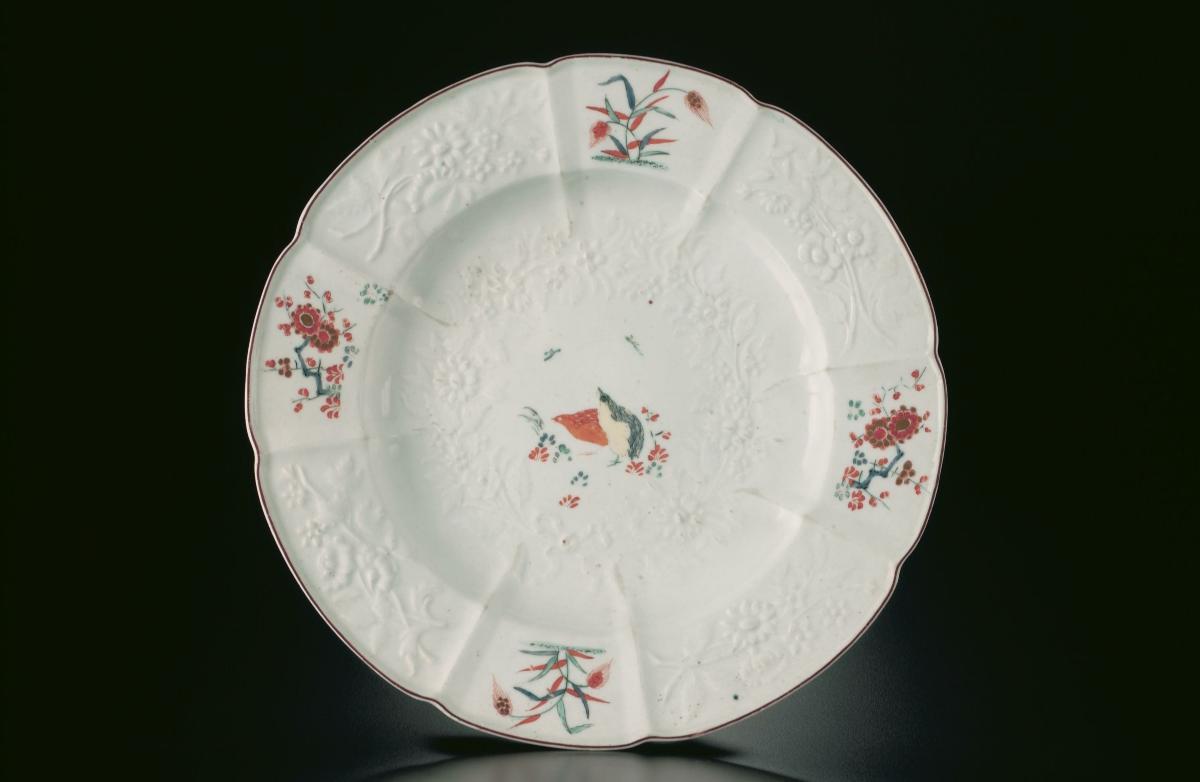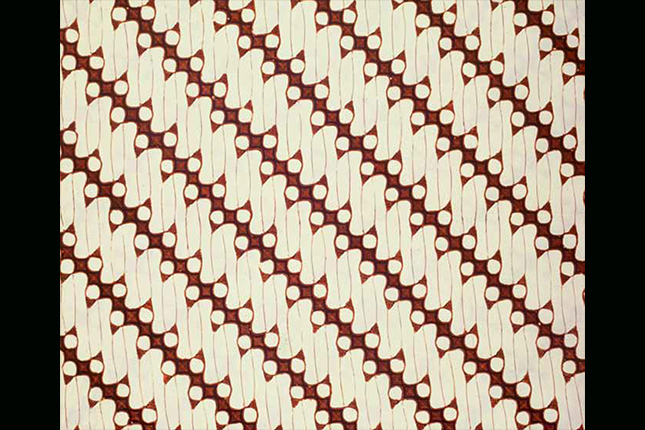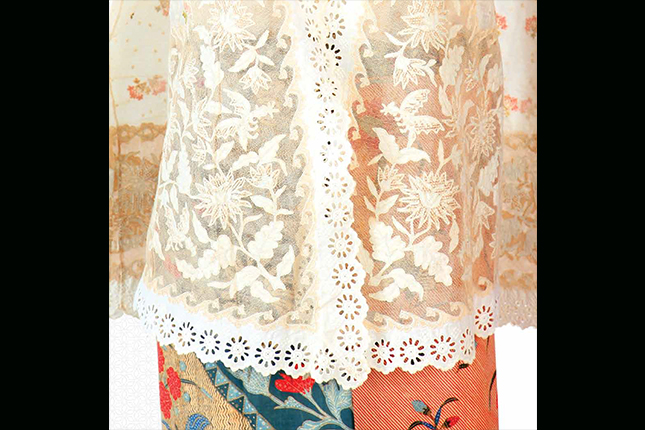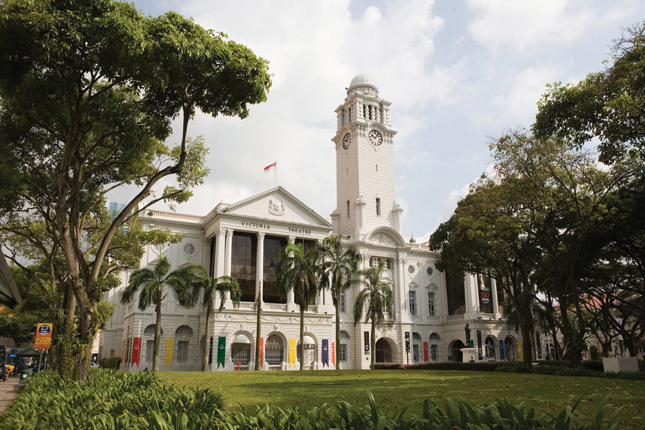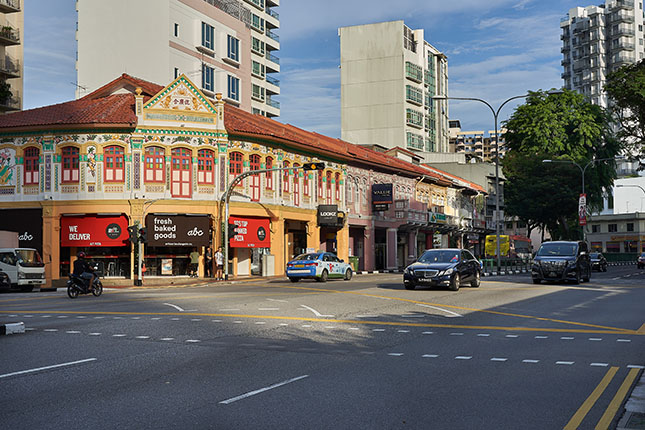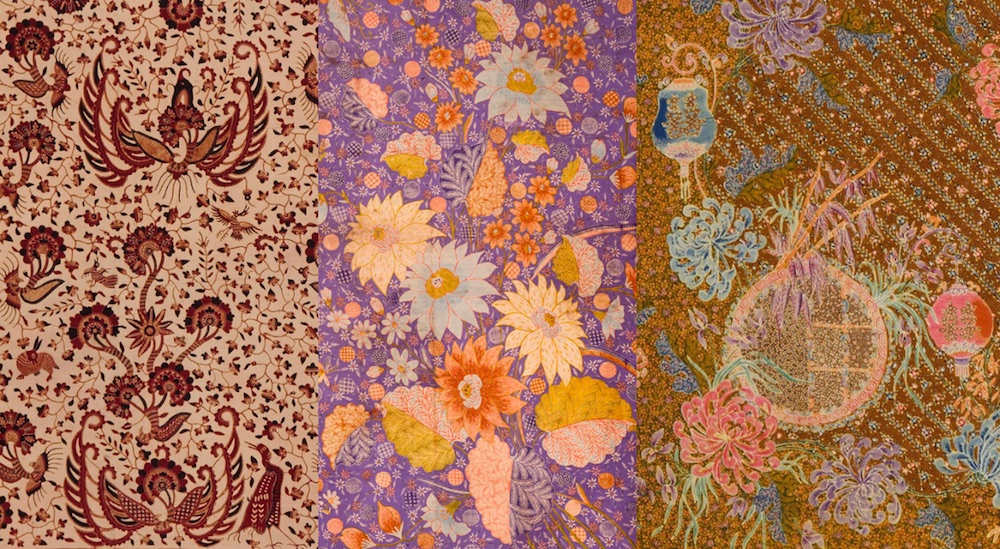The origin of the name of this pattern in 'Imari' style colours and a purplish pink, remains unclear. Since the mid 19th century, this pattern has been known as ‘Queen Charlotte’ – probably referring to the visit by Queen Charlotte (1744–1818) and her husband, King George III of Great Britain (1738-1820), to the Worcester factory in 1788. This distinctive pattern, also known as the ‘whorl’ pattern, could have been named in honour of the royal visit.Japanese porcelain first reached Europe around 1660 and exports continued for about a century. Japanese porcelain in the Imari style had one of the greatest impacts on European ceramics. It was produced in the area of Arita in present-day Saga prefecture on Kyushu Island. Imari derived its name from the port from where it was shipped. The range of enamels used on Imari wares is fairly wide but generally consists of blue, red and gold.




